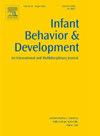母亲与早产儿互动中的母性情感抚触和适应性同步:对早期亲子关系的影响
IF 2
3区 心理学
Q3 PSYCHOLOGY, DEVELOPMENTAL
引用次数: 0
摘要
母亲与早产儿的互动方式,尤其是在压力事件发生前后的互动方式,对婴儿的自我调节能力至关重要。相互依次协调的模式构成了压力调节能力,并为日后的社会情感发展奠定了基础。母亲的情感抚触被认为是早期社会交流中一个重要的调节因素。在这项研究中,我们旨在更好地了解母亲的情感触觉行为与母婴生理同步之间的相互作用,以及对早期亲子关系过程可能产生的影响。我们对新生儿重症监护室中的 15 个母婴二人组进行了视频录像,记录了他们在自由互动过程中以及在进行皮肤干扰性医疗程序(接种疫苗或抽血)后的直接互动。在自由互动和应激后互动中,对母体情感抚触的比例进行了编码。同时对母亲和新生儿的副交感神经反应进行评估,以观察二人的生理同步性。最后,还评估了母亲在安慰婴儿时的互动错位以及婴儿在应激后的行为,以此作为早期亲子关系建立过程中的潜在风险指标。结果表明,母亲情感抚触的持续时间与双亲的自律神经同步模式之间存在正相关。研究发现,在压力诱导程序前后,母性情感抚触与自由互动阶段的几种同步测量之间存在相关性(Spearman ρ = -0,57 do 0,72,p < 0,05),此外,研究还揭示了互动失调程度与压力后母性情感抚触持续时间之间的正相关性(ρ = 0,47,p < 0,05)。在自由互动中,同步性的质量优于应激后袋鼠照料阶段(p < 0,05)。本文章由计算机程序翻译,如有差异,请以英文原文为准。
Maternal affective touch and adaptive synchrony in mother-preterm infant interactions: Implications for early bonding processes
The way in which a mother and her preterm baby interact, especially in moments preceding or following stressful events, is fundamental in shaping the infant's autoregulation. Patterns of mutual sequential coordination constitute stress regulation competences and provide foundation for later socio-emotional development. Maternal affective touch has been postulated as an essential regulatory factor in early social exchange. In this study we aimed to better understand the interplay between maternal affective tactile behaviors and physiological synchrony between mother and child, with possible implications for early bonding processes. Fifteen mother-premature infant dyads were video-recorded during a free interaction and directly after a skin-interrupting medical procedure (vaccination or blood sampling) in the Neonatal Intensive Care Unit. The proportion of maternal affective touch was coded both in free and post-stress interactions. Parasympathetic response was assessed simultaneously in mothers and neonates in order to observe physiological synchrony in dyads. Finally, interactional misattunement during mothers' comforting actions and infant behavior after stress was evaluated as a potential indicator of risk in early bonding processes. Results indicated a positive association between the duration of maternal affective touch and adaptive autonomic synchrony patterns in dyads. Correlations were found between maternal affective touch both before and after stress-inducing procedure and several synchrony measures from free interaction phase (Spearman ρ = –0,57 do 0,72, p < 0,05) Additionally, the study revealed a positive correlation between the level of interactional misattunement and the duration of maternal affective touch after stress (ρ = 0,47, p < 0,05). The quality of synchrony was better in free interactions than during post-stress kangaroo care phase (p < 0,05).
求助全文
通过发布文献求助,成功后即可免费获取论文全文。
去求助
来源期刊

Infant Behavior & Development
PSYCHOLOGY, DEVELOPMENTAL-
CiteScore
4.10
自引率
4.80%
发文量
94
期刊介绍:
Infant Behavior & Development publishes empirical (fundamental and clinical), theoretical, methodological and review papers. Brief reports dealing with behavioral development during infancy (up to 3 years) will also be considered. Papers of an inter- and multidisciplinary nature, for example neuroscience, non-linear dynamics and modelling approaches, are particularly encouraged. Areas covered by the journal include cognitive development, emotional development, perception, perception-action coupling, motor development and socialisation.
 求助内容:
求助内容: 应助结果提醒方式:
应助结果提醒方式:


